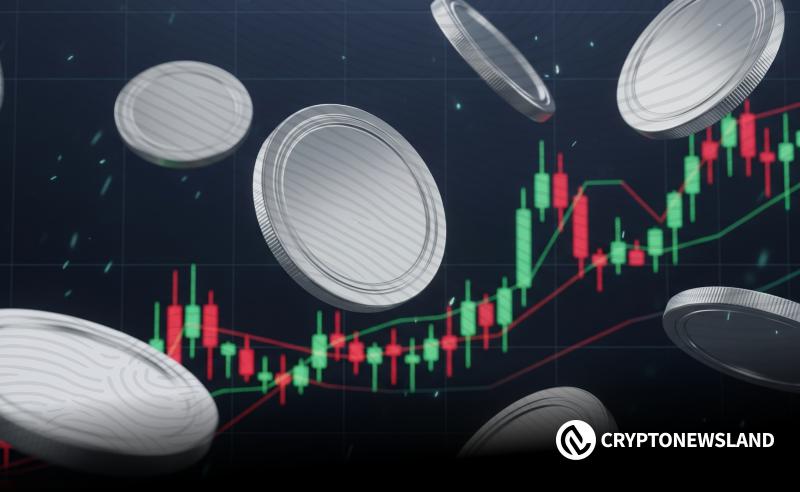Bitcoin Treasury Strategies: KindlyMD's $5 Billion Move and Its Implications for Institutional Adoption
- KindlyMD (NASDAQ: NAKA) launched a $5B ATM offering to build a Bitcoin treasury, merging with Nakamoto Holdings to acquire 5,744 BTC for $679M. - The move reflects growing DAT trends, with public companies holding over 951,000 BTC ($100B) and regulatory support via the BITCOIN Act and GENIUS Act. - While Bitcoin's 47% hashrate growth and 2.3× MVRV ratio highlight its inflation-hedging appeal, KindlyMD's stock fell 12% due to dilution and volatility risks. - The DAT sector faces balancing innovation (conv
In the evolving landscape of corporate finance, Bitcoin is no longer a speculative curiosity but a strategic asset. The rise of Digital Asset Treasuries (DATs) has redefined how institutions allocate capital, with companies increasingly treating Bitcoin as a hedge against inflation and a store of value. At the forefront of this shift is KindlyMD (NASDAQ: NAKA), a Nasdaq-listed healthcare services company that has transformed itself into a Bitcoin-focused entity through a $5 billion at-the-market (ATM) equity offering program. This bold move, announced in August 2025, underscores the accelerating institutional adoption of Bitcoin and raises critical questions about the future of corporate treasury management.
Strategic Capital Allocation: KindlyMD's $5 Billion ATM Offering
KindlyMD's decision to allocate $5 billion toward Bitcoin treasury expansion follows its merger with Nakamoto Holdings Inc., a Bitcoin-native holding company. The merger, finalized in August 2025, allowed KindlyMD to acquire 5,744 Bitcoin (BTC) for $679 million, marking the beginning of its Bitcoin accumulation strategy. The ATM program, structured under a Form S-3 registration with the SEC, provides the company with flexibility to issue shares at market prices, enabling it to capitalize on favorable Bitcoin price movements while maintaining liquidity for other corporate needs.
The offering's primary objective is to build a Bitcoin treasury, but the funds may also be used for acquisitions, working capital, and capital expenditures. CEO David Bailey has emphasized a “thoughtful and methodical” approach, aligning with the long-term vision of transforming KindlyMD into a premier institutional-grade Bitcoin treasury vehicle. However, the lack of a fixed allocation percentage for Bitcoin purchases has raised investor concerns about dilution and strategic clarity.
Market Dynamics: Bitcoin as a Corporate Reserve Asset
KindlyMD's strategy mirrors broader trends in the DAT sector. By August 2025, over 951,000 BTC were held by public companies, valued at more than $100 billion. Firms like MicroStrategy (MSTR) and MARA Holdings (MARA) have pioneered this approach, with MicroStrategy alone holding 597,000 BTC. The BITCOIN Act of 2025, which proposes the acquisition of 1 million BTC over five years, further legitimizes Bitcoin's role in institutional portfolios.
Regulatory tailwinds, including the passage of the GENIUS Act and President Trump's executive order establishing a Strategic Bitcoin Reserve, have reduced legal uncertainty. Meanwhile, BlackRock's iShares Bitcoin Trust (IBIT) has attracted $70 billion in assets under management, signaling institutional confidence. These developments create a fertile ground for companies like KindlyMD to scale Bitcoin treasuries while navigating macroeconomic headwinds.
Risks and Rewards: Balancing Innovation and Volatility
While Bitcoin's appeal as a reserve asset is undeniable, its volatility poses challenges. KindlyMD's stock price fell 12% following the ATM announcement, reflecting investor skepticism about dilution and execution risk. Analysts warn that large-scale corporate Bitcoin purchases could amplify market swings, as seen in MicroStrategy's past influence on BTC price movements. Additionally, the reliance on equity financing to fund Bitcoin acquisitions may dilute shareholder value, particularly if Bitcoin's price stagnates or declines.
However, proponents argue that Bitcoin's scarcity-driven model—evidenced by a 47% year-over-year increase in network hashrate and a 92% profit ratio for holders—positions it as a superior inflation hedge. The MVRV ratio of 2.3× indicates that long-term holders are up 230% on their cost basis, reinforcing Bitcoin's role as a capital-preserving asset. For KindlyMD, the key will be balancing Bitcoin accumulation with prudent capital allocation to avoid overexposure.
Investment Implications: A New Era for DATs
KindlyMD's $5 billion initiative highlights the growing intersection of traditional finance and digital assets. As more companies adopt Bitcoin treasuries, the DAT sector is likely to see increased competition for liquidity and innovation in capital-raising mechanisms. Convertible debt, ATM offerings, and hybrid instruments will become critical tools for scaling Bitcoin holdings while managing risk.
For investors, the DAT sector presents both opportunities and risks. Companies with disciplined treasury management, like Bitfarms (BITF) and CEA Industries (BNC), offer exposure to Bitcoin's upside while mitigating operational risks. Conversely, firms with opaque capital allocation strategies or heavy reliance on equity financing may face headwinds.
Conclusion: Navigating the Future of Corporate Treasuries
KindlyMD's $5 billion move is a testament to the transformative power of Bitcoin in corporate finance. While the company's strategy is ambitious, its success will depend on execution, regulatory clarity, and Bitcoin's long-term price trajectory. For investors, the DAT sector represents a high-conviction opportunity, but it demands careful due diligence. As the market evolves, the ability to balance innovation with risk management will separate leaders from laggards in the digital asset treasury revolution.
In the end, KindlyMD's journey—and the broader DAT sector—serves as a case study in how traditional institutions are redefining value in the digital age. Whether this represents the next frontier of capital preservation or a speculative bubble remains to be seen, but one thing is clear: Bitcoin's role in corporate treasuries is here to stay.
Disclaimer: The content of this article solely reflects the author's opinion and does not represent the platform in any capacity. This article is not intended to serve as a reference for making investment decisions.
You may also like
Cardano Surges 11% as ADA Targets $0.90 in New Market Breakout

Bittensor’s TAO Tests Upper Range as Momentum Builds Above $409 Support

DASH Price Soars 130% in Days, Bulls Target $66 as Breakout Momentum Builds

Ethereum and Polkadot Rally, as LINK Emerges as the Best Crypto to Buy – Price Prediction Sparks Excitement
